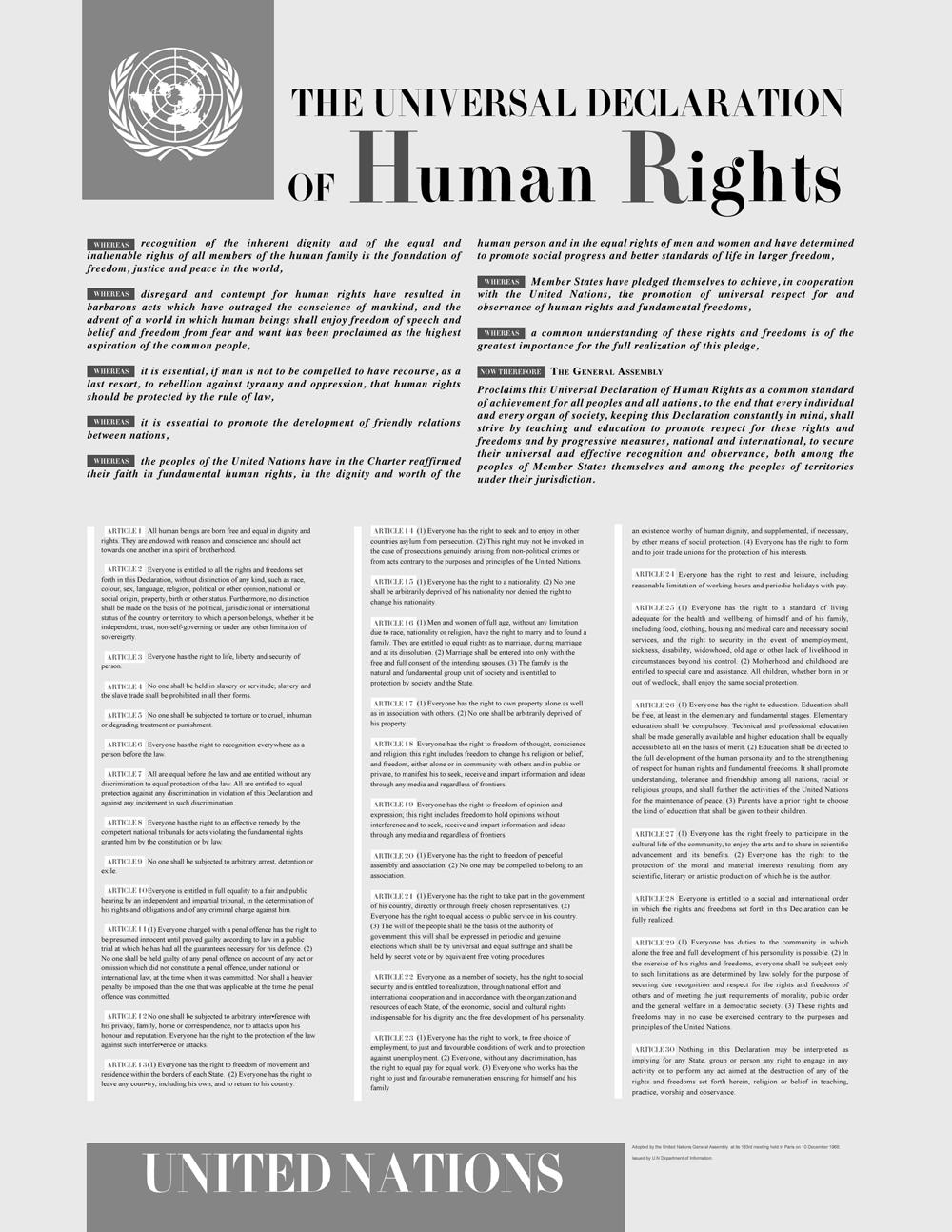The Universal Declaration of Human Rights (1948)

By 1948, the United Nations’ new Human Rights Commission had captured the world’s attention. Under the dynamic chairmanship of Eleanor Roosevelt—President Franklin Roosevelt’s widow, a human rights champion in her own right and the United States delegate to the UN—the Commission set out to draft the document that became the Universal Declaration of Human Rights. Roosevelt, credited with its inspiration, referred to the Declaration as the international Magna Carta for all mankind. It was adopted by the United Nations on December 10, 1948.In its preamble and in Article 1, the Declaration unequivocally proclaims the inherent rights of all human beings: "Disregard and contempt for human rights have resulted in barbarous acts which have outraged the conscience of mankind, and the advent of a world in which human beings shall enjoy freedom of speech and belief and freedom from fear and want has been proclaimed as the highest aspiration of the common people...All human beings are born free and equal in dignity and rights.”The Member States of the United Nations pledged to work together to promote the thirty Articles of human rights that, for the first time in history, had been assembled and codified into a single document. In consequence, many of these rights, in various forms, are today part of the constitutional laws of democratic nations.